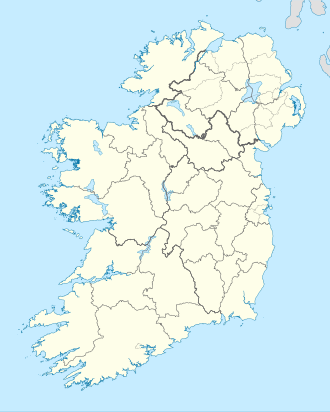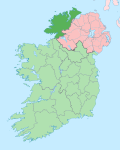 Inch Island from Grianan of Aileach | |
| Geography | |
| Location | Lough Swilly |
| Coordinates | 55°03′54″N7°29′42″W / 55.065°N 7.495°W |
| Area | 13 km2 (5.0 sq mi) |
| Highest elevation | 222 m (728 ft) |
| Administration | |
| Province | Ulster |
| County | Donegal |
| Demographics | |
| Population | 396 (2022) [3] |
Inch Island (Irish : An Inis, meaning 'the island' [4] [5] ) is in Lough Swilly, a sea lough in County Donegal on the northern coast of Ireland. [6] [7] Inch is also the name of the civil parish covering the island. [4]



